10 NPS Survey Questions & Possible Data Insights for Ecommerce Customers
10 NPS Survey Questions & Possible Data Insights for Ecommerce Customers
10 NPS Survey Questions & Possible Data Insights for Ecommerce Customers



What is an NPS Survey?
An NPS (Net Promoter Score) survey measures customer satisfaction with one key question: "On a scale of 0 to 10, how likely are you to recommend our product/service to a friend or colleague?". Your survey respondents are categorized based on their responses.
Promoters (9-10): Highly satisfied customers who are likely to recommend your company to their acquaintances. They will keep buying from your brand and refer your brand to others, fueling your business growth.
Passives (7-8): Moderately satisfied customers who might switch to your competitors if given the opportunity, as they are not fully loyal to your brand.
Detractors (0-6): Unhappy customers who could damage your brand through negative word-of-mouth.
How to calculate NPS score? Subtract the percentage of Detractors from the percentage of Promoters. The result is a score between -100 and +100. A positive score indicates more promoters than detractors resulting in higher customer ratings for your business.
An NPS survey is similar to a SWOT analysis for your brand from your customer’s perspective. Understand customer loyalty, identify areas for improvement, and track your performance. Likewise, monitor changes in customer sentiment, and develop business strategies to convert passives and detractors into promoters. This continuous feedback loop positions you as a business responsive to its customer needs.
10 NPS Rating Questions with Examples
#1 Assessing Overall Customer Satisfaction
"On a scale of 0 to 10, how likely are you to recommend our e-commerce platform to a friend or colleague?"
Possible Data Insights:
Key drivers of customer satisfaction and loyalty.
Overall sentiment towards the brand.
Common themes in customer feedback that highlight strengths and weaknesses.
Insights on loyal customer segments and areas for potential improvement.
#2 Evaluating Product Selection
"On a scale of 0 to 10, how likely are you to recommend our e-commerce platform based on our product selection?"
Possible Data Insights:
Popular product categories and items.
Gaps in the current product offering.
Customer preferences for product variety and availability.
Trends in customer demand and emerging product interests.
#3 Understanding Website Usability
"On a scale of 0 to 10, how likely are you to recommend our e-commerce website based on your experience with its usability and navigation?"
Possible Data Insights:
Usability issues and areas where customers face difficulties.
Effectiveness of website navigation and design.
Commonly encountered technical issues or bugs.
Customer suggestions to improve website functionality and user experience.
#4 Measuring Customer Support Effectiveness
"On a scale of 0 to 10, how likely are you to recommend our e-commerce platform based on your experience with our customer support?"
Possible Data Insights:
Customer satisfaction levels with support interactions.
Response times and resolution effectiveness of customer support.
Common issues raised during support interactions.
Opportunities for training and process improvements in the support team.
#5 Assessing Delivery Speed and Reliability
"On a scale of 0 to 10, how likely are you to recommend our e-commerce platform based on the speed and reliability of our delivery service?"
Possible Data Insights:
Average delivery times and customer satisfaction with delivery speed.
Frequency and impact of delivery delays or issues.
Regional differences in delivery performance.
Customer preferences for delivery options and service enhancements.
#6 Evaluating Payment Process
"On a scale of 0 to 10, how likely are you to recommend our e-commerce platform based on the ease of our payment process?"
Possible Data Insights:
Smoothness and ease of the payment process.
Issues encountered during checkout, such as payment failures.
Preferred payment methods and any barriers to using them.
Customer suggestions to improve the checkout and payment experience.
#7 Understanding Return and Refund Policy Satisfaction
"On a scale of 0 to 10, how likely are you to recommend our e-commerce platform based on your experience with our return and refund policy?"
Possible Data Insights:
Clarity on the return and refund policy.
Customer satisfaction with the ease of the returns process.
Common reasons for returns and refund requests.
Opportunities to simplify and improve the return policy or process
#8 Assessing Price Competitiveness
"On a scale of 0 to 10, how likely are you to recommend our e-commerce platform based on our product prices and overall value for money?"
Possible Data Insights:
Perceived value for money of products.
Sensitivity to price changes and discounts.
Comparison of prices with competitors from the customer's perspective.
Suggestions for pricing adjustments or promotional strategies.
#9 Evaluating Product Quality
"On a scale of 0 to 10, how likely are you to recommend our e-commerce platform based on the quality of the products you have purchased?"
Possible Data Insights:
Customer satisfaction with the quality of purchased products.
Common quality issues or defects reported by customers.
Product categories with the highest and lowest quality ratings.
Opportunities for product improvements and quality control enhancements.
#10 Understanding Mobile App Experience
"On a scale of 0 to 10, how likely are you to recommend our e-commerce mobile app to a friend or colleague?"
Possible Data Insights:
User satisfaction with mobile app features and performance.
Common issues or bugs encountered in the mobile app.
Features or functionalities that customers would like to see added.
Overall impact of the mobile app experience on customer loyalty and satisfaction.
Each of these NPS rating questions targets a specific problem statement of the e-commerce customer experience. An e-commerce brand can leverage these questions to gather focused feedback to address different areas of concern and improve overall customer satisfaction.
Unlike drag-and-drop form builders that require manual question input and design adjustments, AI-powered survey form builders automatically generate relevant questions, optimize survey flow, and ensure engaging designs. Survey automation reduces human error, saves time, and provides personalized insights by analyzing previous responses and customer data.
AI-driven survey form tools also offer advanced analytics, providing deeper insights into customer sentiment and actionable recommendations. Consequently, businesses leveraging AI in NPS surveys experience improved response rates, more accurate data collection, and better customer understanding, strategic decisions and customer loyalty.
Metaforms’ AI form builder blends together conversational AI and advanced predictive analytics to create next-gen NPS survey forms. Benefit from an insightful survey report with meaningful data on your respondents and their responses. Try Metaforms today for free.
What is an NPS Survey?
An NPS (Net Promoter Score) survey measures customer satisfaction with one key question: "On a scale of 0 to 10, how likely are you to recommend our product/service to a friend or colleague?". Your survey respondents are categorized based on their responses.
Promoters (9-10): Highly satisfied customers who are likely to recommend your company to their acquaintances. They will keep buying from your brand and refer your brand to others, fueling your business growth.
Passives (7-8): Moderately satisfied customers who might switch to your competitors if given the opportunity, as they are not fully loyal to your brand.
Detractors (0-6): Unhappy customers who could damage your brand through negative word-of-mouth.
How to calculate NPS score? Subtract the percentage of Detractors from the percentage of Promoters. The result is a score between -100 and +100. A positive score indicates more promoters than detractors resulting in higher customer ratings for your business.
An NPS survey is similar to a SWOT analysis for your brand from your customer’s perspective. Understand customer loyalty, identify areas for improvement, and track your performance. Likewise, monitor changes in customer sentiment, and develop business strategies to convert passives and detractors into promoters. This continuous feedback loop positions you as a business responsive to its customer needs.
10 NPS Rating Questions with Examples
#1 Assessing Overall Customer Satisfaction
"On a scale of 0 to 10, how likely are you to recommend our e-commerce platform to a friend or colleague?"
Possible Data Insights:
Key drivers of customer satisfaction and loyalty.
Overall sentiment towards the brand.
Common themes in customer feedback that highlight strengths and weaknesses.
Insights on loyal customer segments and areas for potential improvement.
#2 Evaluating Product Selection
"On a scale of 0 to 10, how likely are you to recommend our e-commerce platform based on our product selection?"
Possible Data Insights:
Popular product categories and items.
Gaps in the current product offering.
Customer preferences for product variety and availability.
Trends in customer demand and emerging product interests.
#3 Understanding Website Usability
"On a scale of 0 to 10, how likely are you to recommend our e-commerce website based on your experience with its usability and navigation?"
Possible Data Insights:
Usability issues and areas where customers face difficulties.
Effectiveness of website navigation and design.
Commonly encountered technical issues or bugs.
Customer suggestions to improve website functionality and user experience.
#4 Measuring Customer Support Effectiveness
"On a scale of 0 to 10, how likely are you to recommend our e-commerce platform based on your experience with our customer support?"
Possible Data Insights:
Customer satisfaction levels with support interactions.
Response times and resolution effectiveness of customer support.
Common issues raised during support interactions.
Opportunities for training and process improvements in the support team.
#5 Assessing Delivery Speed and Reliability
"On a scale of 0 to 10, how likely are you to recommend our e-commerce platform based on the speed and reliability of our delivery service?"
Possible Data Insights:
Average delivery times and customer satisfaction with delivery speed.
Frequency and impact of delivery delays or issues.
Regional differences in delivery performance.
Customer preferences for delivery options and service enhancements.
#6 Evaluating Payment Process
"On a scale of 0 to 10, how likely are you to recommend our e-commerce platform based on the ease of our payment process?"
Possible Data Insights:
Smoothness and ease of the payment process.
Issues encountered during checkout, such as payment failures.
Preferred payment methods and any barriers to using them.
Customer suggestions to improve the checkout and payment experience.
#7 Understanding Return and Refund Policy Satisfaction
"On a scale of 0 to 10, how likely are you to recommend our e-commerce platform based on your experience with our return and refund policy?"
Possible Data Insights:
Clarity on the return and refund policy.
Customer satisfaction with the ease of the returns process.
Common reasons for returns and refund requests.
Opportunities to simplify and improve the return policy or process
#8 Assessing Price Competitiveness
"On a scale of 0 to 10, how likely are you to recommend our e-commerce platform based on our product prices and overall value for money?"
Possible Data Insights:
Perceived value for money of products.
Sensitivity to price changes and discounts.
Comparison of prices with competitors from the customer's perspective.
Suggestions for pricing adjustments or promotional strategies.
#9 Evaluating Product Quality
"On a scale of 0 to 10, how likely are you to recommend our e-commerce platform based on the quality of the products you have purchased?"
Possible Data Insights:
Customer satisfaction with the quality of purchased products.
Common quality issues or defects reported by customers.
Product categories with the highest and lowest quality ratings.
Opportunities for product improvements and quality control enhancements.
#10 Understanding Mobile App Experience
"On a scale of 0 to 10, how likely are you to recommend our e-commerce mobile app to a friend or colleague?"
Possible Data Insights:
User satisfaction with mobile app features and performance.
Common issues or bugs encountered in the mobile app.
Features or functionalities that customers would like to see added.
Overall impact of the mobile app experience on customer loyalty and satisfaction.
Each of these NPS rating questions targets a specific problem statement of the e-commerce customer experience. An e-commerce brand can leverage these questions to gather focused feedback to address different areas of concern and improve overall customer satisfaction.
Unlike drag-and-drop form builders that require manual question input and design adjustments, AI-powered survey form builders automatically generate relevant questions, optimize survey flow, and ensure engaging designs. Survey automation reduces human error, saves time, and provides personalized insights by analyzing previous responses and customer data.
AI-driven survey form tools also offer advanced analytics, providing deeper insights into customer sentiment and actionable recommendations. Consequently, businesses leveraging AI in NPS surveys experience improved response rates, more accurate data collection, and better customer understanding, strategic decisions and customer loyalty.
Metaforms’ AI form builder blends together conversational AI and advanced predictive analytics to create next-gen NPS survey forms. Benefit from an insightful survey report with meaningful data on your respondents and their responses. Try Metaforms today for free.
What is an NPS Survey?
An NPS (Net Promoter Score) survey measures customer satisfaction with one key question: "On a scale of 0 to 10, how likely are you to recommend our product/service to a friend or colleague?". Your survey respondents are categorized based on their responses.
Promoters (9-10): Highly satisfied customers who are likely to recommend your company to their acquaintances. They will keep buying from your brand and refer your brand to others, fueling your business growth.
Passives (7-8): Moderately satisfied customers who might switch to your competitors if given the opportunity, as they are not fully loyal to your brand.
Detractors (0-6): Unhappy customers who could damage your brand through negative word-of-mouth.
How to calculate NPS score? Subtract the percentage of Detractors from the percentage of Promoters. The result is a score between -100 and +100. A positive score indicates more promoters than detractors resulting in higher customer ratings for your business.
An NPS survey is similar to a SWOT analysis for your brand from your customer’s perspective. Understand customer loyalty, identify areas for improvement, and track your performance. Likewise, monitor changes in customer sentiment, and develop business strategies to convert passives and detractors into promoters. This continuous feedback loop positions you as a business responsive to its customer needs.
10 NPS Rating Questions with Examples
#1 Assessing Overall Customer Satisfaction
"On a scale of 0 to 10, how likely are you to recommend our e-commerce platform to a friend or colleague?"
Possible Data Insights:
Key drivers of customer satisfaction and loyalty.
Overall sentiment towards the brand.
Common themes in customer feedback that highlight strengths and weaknesses.
Insights on loyal customer segments and areas for potential improvement.
#2 Evaluating Product Selection
"On a scale of 0 to 10, how likely are you to recommend our e-commerce platform based on our product selection?"
Possible Data Insights:
Popular product categories and items.
Gaps in the current product offering.
Customer preferences for product variety and availability.
Trends in customer demand and emerging product interests.
#3 Understanding Website Usability
"On a scale of 0 to 10, how likely are you to recommend our e-commerce website based on your experience with its usability and navigation?"
Possible Data Insights:
Usability issues and areas where customers face difficulties.
Effectiveness of website navigation and design.
Commonly encountered technical issues or bugs.
Customer suggestions to improve website functionality and user experience.
#4 Measuring Customer Support Effectiveness
"On a scale of 0 to 10, how likely are you to recommend our e-commerce platform based on your experience with our customer support?"
Possible Data Insights:
Customer satisfaction levels with support interactions.
Response times and resolution effectiveness of customer support.
Common issues raised during support interactions.
Opportunities for training and process improvements in the support team.
#5 Assessing Delivery Speed and Reliability
"On a scale of 0 to 10, how likely are you to recommend our e-commerce platform based on the speed and reliability of our delivery service?"
Possible Data Insights:
Average delivery times and customer satisfaction with delivery speed.
Frequency and impact of delivery delays or issues.
Regional differences in delivery performance.
Customer preferences for delivery options and service enhancements.
#6 Evaluating Payment Process
"On a scale of 0 to 10, how likely are you to recommend our e-commerce platform based on the ease of our payment process?"
Possible Data Insights:
Smoothness and ease of the payment process.
Issues encountered during checkout, such as payment failures.
Preferred payment methods and any barriers to using them.
Customer suggestions to improve the checkout and payment experience.
#7 Understanding Return and Refund Policy Satisfaction
"On a scale of 0 to 10, how likely are you to recommend our e-commerce platform based on your experience with our return and refund policy?"
Possible Data Insights:
Clarity on the return and refund policy.
Customer satisfaction with the ease of the returns process.
Common reasons for returns and refund requests.
Opportunities to simplify and improve the return policy or process
#8 Assessing Price Competitiveness
"On a scale of 0 to 10, how likely are you to recommend our e-commerce platform based on our product prices and overall value for money?"
Possible Data Insights:
Perceived value for money of products.
Sensitivity to price changes and discounts.
Comparison of prices with competitors from the customer's perspective.
Suggestions for pricing adjustments or promotional strategies.
#9 Evaluating Product Quality
"On a scale of 0 to 10, how likely are you to recommend our e-commerce platform based on the quality of the products you have purchased?"
Possible Data Insights:
Customer satisfaction with the quality of purchased products.
Common quality issues or defects reported by customers.
Product categories with the highest and lowest quality ratings.
Opportunities for product improvements and quality control enhancements.
#10 Understanding Mobile App Experience
"On a scale of 0 to 10, how likely are you to recommend our e-commerce mobile app to a friend or colleague?"
Possible Data Insights:
User satisfaction with mobile app features and performance.
Common issues or bugs encountered in the mobile app.
Features or functionalities that customers would like to see added.
Overall impact of the mobile app experience on customer loyalty and satisfaction.
Each of these NPS rating questions targets a specific problem statement of the e-commerce customer experience. An e-commerce brand can leverage these questions to gather focused feedback to address different areas of concern and improve overall customer satisfaction.
Unlike drag-and-drop form builders that require manual question input and design adjustments, AI-powered survey form builders automatically generate relevant questions, optimize survey flow, and ensure engaging designs. Survey automation reduces human error, saves time, and provides personalized insights by analyzing previous responses and customer data.
AI-driven survey form tools also offer advanced analytics, providing deeper insights into customer sentiment and actionable recommendations. Consequently, businesses leveraging AI in NPS surveys experience improved response rates, more accurate data collection, and better customer understanding, strategic decisions and customer loyalty.
Metaforms’ AI form builder blends together conversational AI and advanced predictive analytics to create next-gen NPS survey forms. Benefit from an insightful survey report with meaningful data on your respondents and their responses. Try Metaforms today for free.
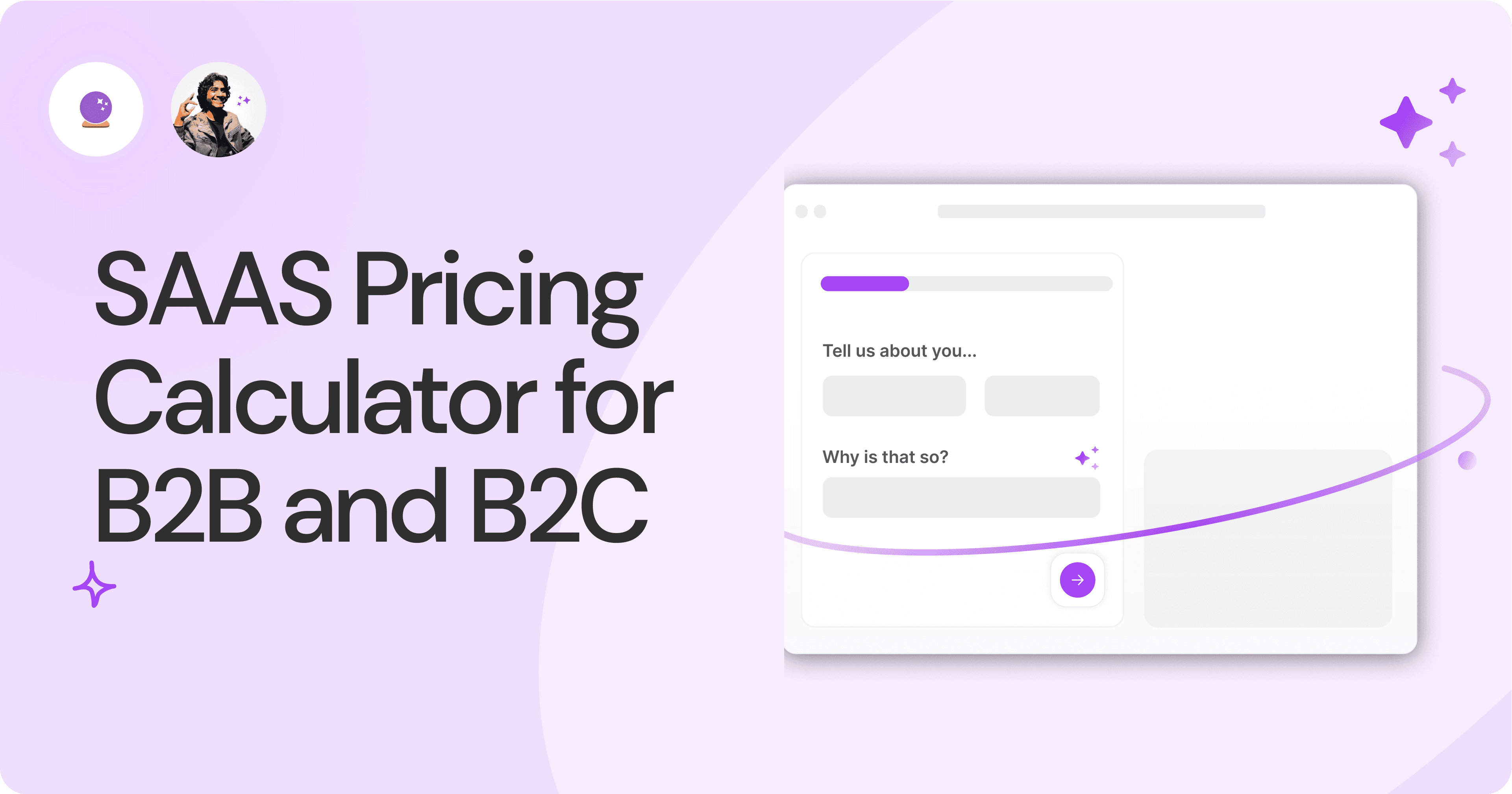
SAAS Pricing Calculators: B2B v B2C Online Forms.
The SaaS pricing calculator is an essential tool for both B2B and B2C SaaS companies. But how do you build it, right? We have you covered.
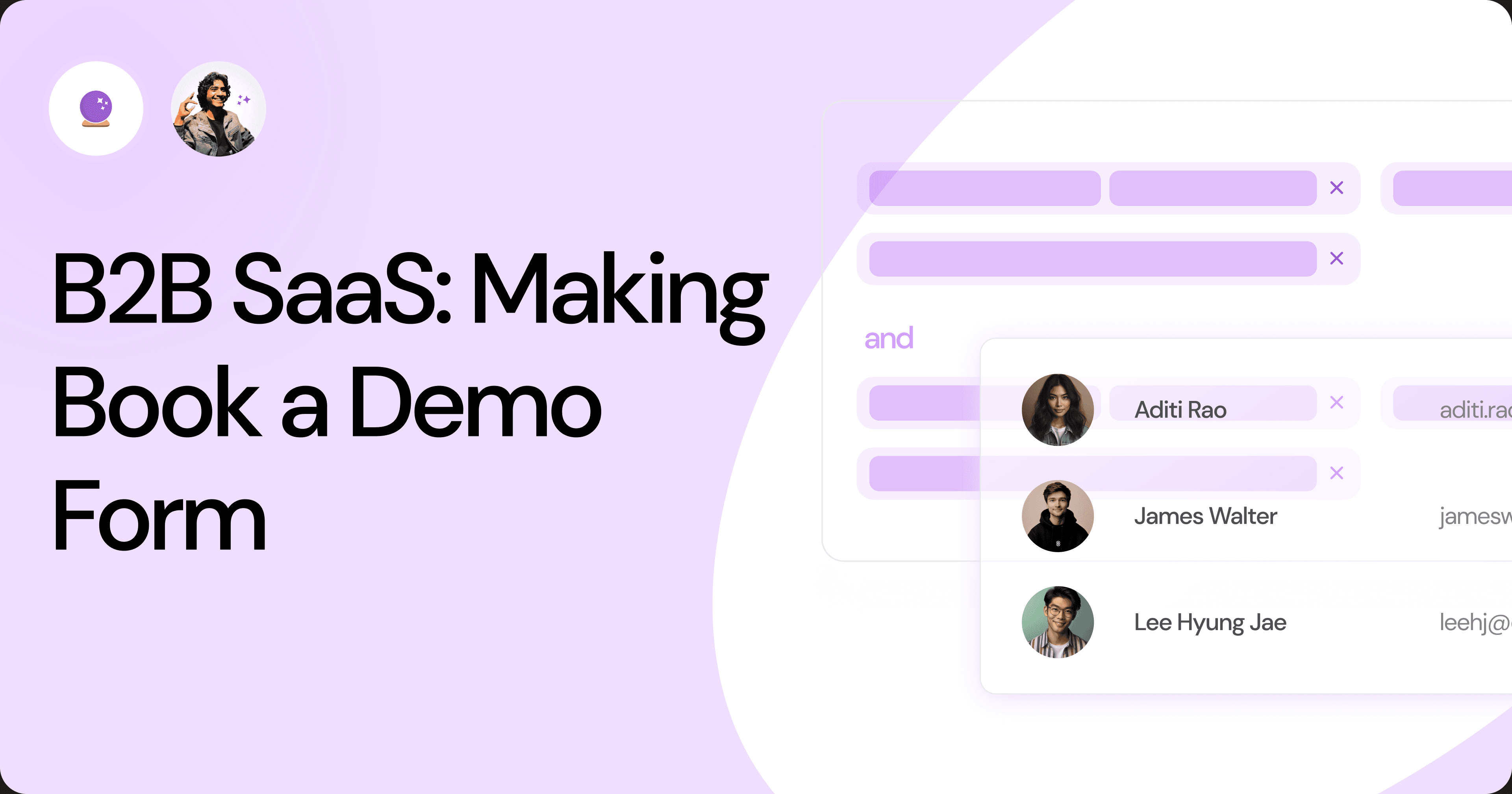
B2B SaaS: Making Book a Demo Form.
Having the perfect book a demo form for B2B SaaS is the first step in capturing leads. There are a few fundamental techniques to get this form right. Read on.

How to Get Started With SaaS Onboarding.
SaaS onboarding is essential for customer onboarding in B2B and B2C SaaS. Let’s understand its fundamentals, including the metrics.
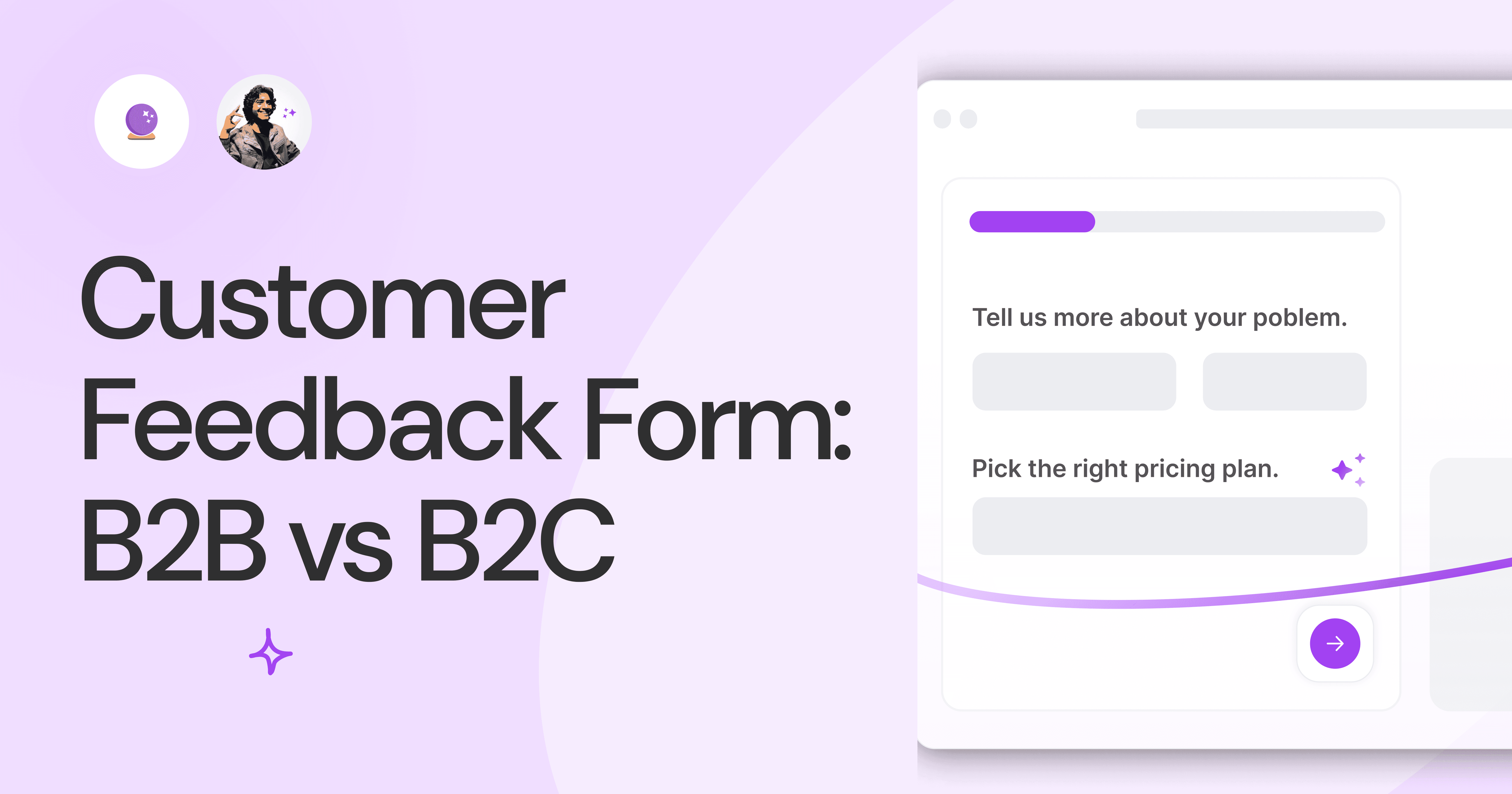
Customer Feedback Form: B2B vs B2C.
Why is customer feedback important? Because it dictates progress on B2B and B2B products and services for the customer to meet their goals.
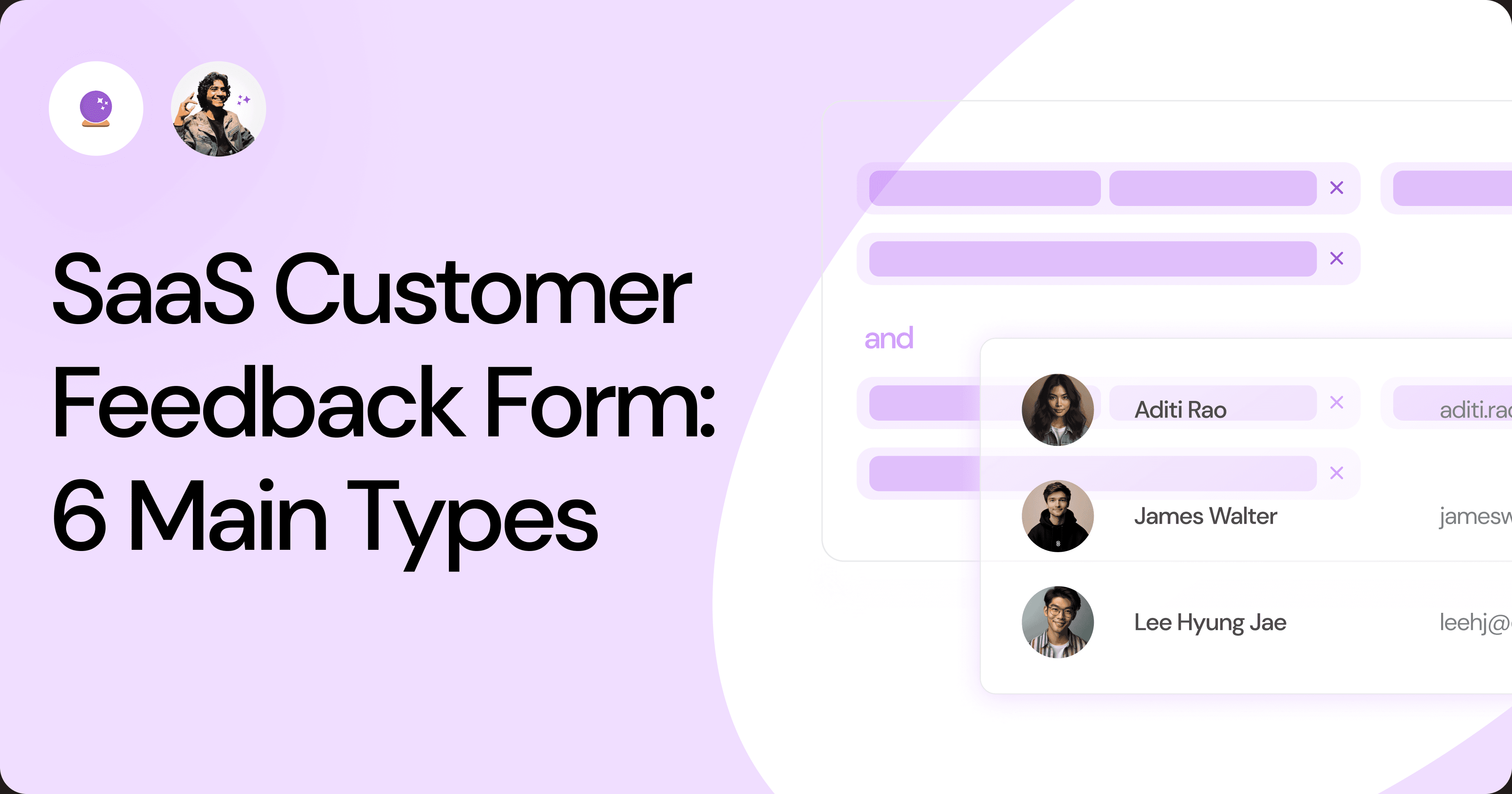
SaaS Customer Feedback Form: 6 Main Types.
As much as SaaS is self-serve, the role of a customer feedback form is highly relevant. There are different types, each with its use case and sections.
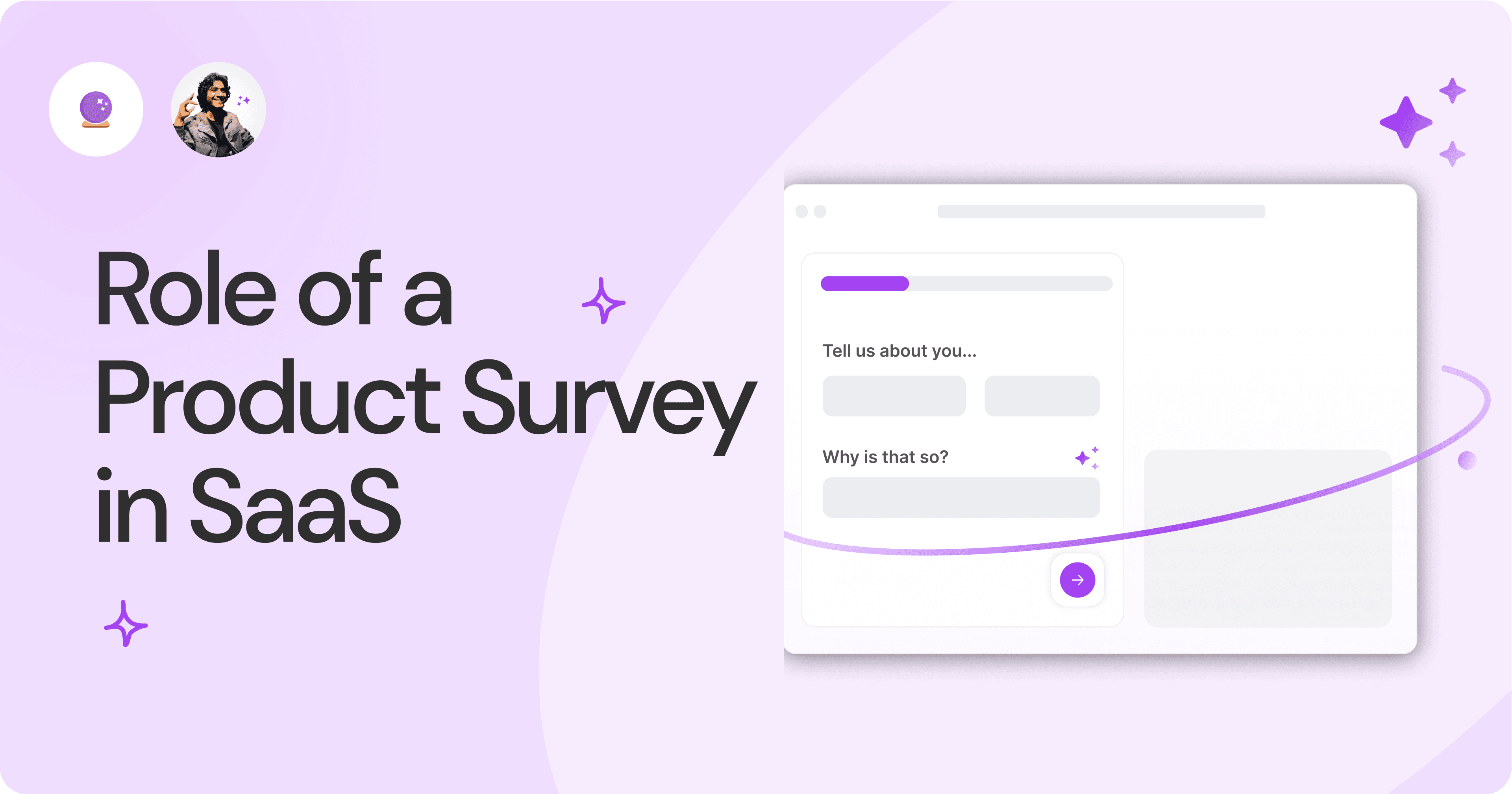
Role of a Product Survey in SaaS.
SaaS is all about creating products for specific use cases. This is where a product survey becomes all the more important to know the user deeply.

Should You Do a SaaS Market Survey?
Every SaaS company wants to grow fast. But without a market survey, growth isn't possible or sustainable. Let’s see how to do a market survey.

SAAS Pricing Calculators: B2B v B2C Online Forms.
The SaaS pricing calculator is an essential tool for both B2B and B2C SaaS companies. But how do you build it, right? We have you covered.

B2B SaaS: Making Book a Demo Form.
Having the perfect book a demo form for B2B SaaS is the first step in capturing leads. There are a few fundamental techniques to get this form right. Read on.

How to Get Started With SaaS Onboarding.
SaaS onboarding is essential for customer onboarding in B2B and B2C SaaS. Let’s understand its fundamentals, including the metrics.

Customer Feedback Form: B2B vs B2C.
Why is customer feedback important? Because it dictates progress on B2B and B2B products and services for the customer to meet their goals.

SaaS Customer Feedback Form: 6 Main Types.
As much as SaaS is self-serve, the role of a customer feedback form is highly relevant. There are different types, each with its use case and sections.

Role of a Product Survey in SaaS.
SaaS is all about creating products for specific use cases. This is where a product survey becomes all the more important to know the user deeply.

Should You Do a SaaS Market Survey?
Every SaaS company wants to grow fast. But without a market survey, growth isn't possible or sustainable. Let’s see how to do a market survey.

SAAS Pricing Calculators: B2B v B2C Online Forms.
The SaaS pricing calculator is an essential tool for both B2B and B2C SaaS companies. But how do you build it, right? We have you covered.

B2B SaaS: Making Book a Demo Form.
Having the perfect book a demo form for B2B SaaS is the first step in capturing leads. There are a few fundamental techniques to get this form right. Read on.

How to Get Started With SaaS Onboarding.
SaaS onboarding is essential for customer onboarding in B2B and B2C SaaS. Let’s understand its fundamentals, including the metrics.

Customer Feedback Form: B2B vs B2C.
Why is customer feedback important? Because it dictates progress on B2B and B2B products and services for the customer to meet their goals.

SaaS Customer Feedback Form: 6 Main Types.
As much as SaaS is self-serve, the role of a customer feedback form is highly relevant. There are different types, each with its use case and sections.

Role of a Product Survey in SaaS.
SaaS is all about creating products for specific use cases. This is where a product survey becomes all the more important to know the user deeply.

Should You Do a SaaS Market Survey?
Every SaaS company wants to grow fast. But without a market survey, growth isn't possible or sustainable. Let’s see how to do a market survey.

Nine Types of Healthcare and Medical Forms.
Medical forms are a must-have for any healthcare business or practitioner. Learn about the different kinds of medical and healthcare forms.

4 Tips for Better Medical History Forms.
Medical history forms are central to patient care, onboarding, and medical administration records. Learn how to make them easier to fill.

How to Build Mental Health Intake Forms?
Mental health intake forms are not like patient intake forms. Mental health intake forms deal with far more sensitive data and have specific design methods.

What, Why and How of Telemedicine Forms.
Telemedicine is on the rise and with different form builders out there, which one best suits your needs as a healthcare services provider?

3 Reasons for Major Drop-Offs in Medical Forms.
No matter which healthcare form we pick, there are major drop-off reasons. We shall dive into the top 3 and learn how to resolve them in your next form.

Patient Onboarding Forms - From Click to Clinic.
Patient onboarding forms are the first touchpoint for patients; getting this right for higher conversion rates is a must-have. Learn how to perfect them now.

5 Key Parts of a Good Patient Satisfaction Form.
The goal of patient satisfaction surveys is to course-correct the services of a healthcare provider. Patient feedback leads to a culture of patient-centric care.

Build Quick and Easy Medical Release Forms.
Every HIPAA-compliant healthcare provider comes across medical release forms that involve details from medical history forms. Can they be shipped fast? Yes.

SAAS Pricing Calculators: B2B v B2C Online Forms.
The SaaS pricing calculator is an essential tool for both B2B and B2C SaaS companies. But how do you build it, right? We have you covered.

B2B SaaS: Making Book a Demo Form.
Having the perfect book a demo form for B2B SaaS is the first step in capturing leads. There are a few fundamental techniques to get this form right. Read on.

How to Get Started With SaaS Onboarding.
SaaS onboarding is essential for customer onboarding in B2B and B2C SaaS. Let’s understand its fundamentals, including the metrics.

Customer Feedback Form: B2B vs B2C.
Why is customer feedback important? Because it dictates progress on B2B and B2B products and services for the customer to meet their goals.

SaaS Customer Feedback Form: 6 Main Types.
As much as SaaS is self-serve, the role of a customer feedback form is highly relevant. There are different types, each with its use case and sections.

Role of a Product Survey in SaaS.
SaaS is all about creating products for specific use cases. This is where a product survey becomes all the more important to know the user deeply.

Should You Do a SaaS Market Survey?
Every SaaS company wants to grow fast. But without a market survey, growth isn't possible or sustainable. Let’s see how to do a market survey.
Subscribe to stay updated.
Subscribe to stay updated.
Subscribe to stay updated.
HC

HC

HC

HC

70+ people from across industries read our emails.
HC

HC

70+ people from across industries read our emails.
HC

HC

HC

70+ people from across industries read our emails.




Bangalore, India / San Francisco, US
WorkHack Inc. 2023
Bangalore, India
San Francisco, US
WorkHack Inc. 2023
WorkHack Inc. 2023
Bangalore, India / San Francisco, US
WorkHack Inc. 2023
Bangalore, India / San Francisco, US



